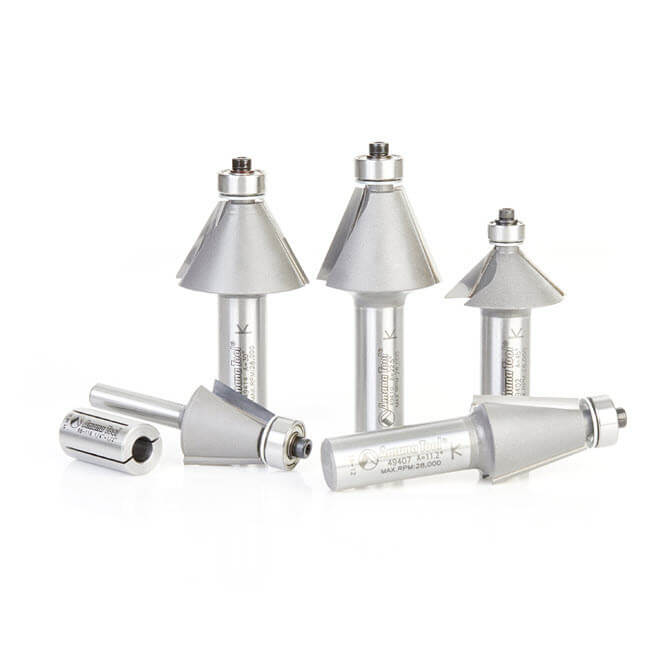
Choosing the Right Chamfer Bit
A chamfer bit is designed to create beveled edges on wood or more, giving it a more polished look. It adds a slope - sometimes subtle, sometimes quite pronounced - to those sharp corners, softening them up and adding a bit of design to your woodworking projects.
What is a bevel, you ask?

The word "chamfer" dates back to 14th-century French stonemasons, who beveled the edges of their stone blocks to make them less susceptible to chipping. Woodworkers thought it looked elegant, and began chamfering the edges of their furniture and other fine creations.
And if you've ever fallen on the sharp edge of a table or counter, you'll know that was a good idea.
Determine the Degree
Chamfer bits come in many different degrees, the most popular being the standard 45°, with 30° a close second. The bigger the number, the flatter the bit.

At ToolsToday, we have chamfer bits from 60°, down to 22.5°, 15°, even 11.25°.
Use them to produce precise, accurate angles to make 4-, 6-, 8-, 12-,or 16-sided boxes with edge-mitered joints.

Do You Need a Specialty Bit?
- A double-chamfer bit allows you to chamfer both the top and bottom of an edge in a single pass.
- A miniature chamfer bit is perfect for small fine work such as signs, lettering, small boxes, guitarmaking/luthier and toymaking; essentially any project that requires tiny flush trimming or shaping.
Other Dimensions

- The diameter [D] of the chamfer bit determines the width of the chamfer that is created. If you use a larger diameter bit, you will create a wider chamfer, and if you use a smaller diameter bit, you will create a narrower chamfer.
Diameters commonly run from 1" diameter to 3" diameter.
Miniature chamfer bits are smaller, perhaps 1/2". - Your router machine's spindle size determines the shank size you need.
The larger the shank size, the more stable the bit will be.
In a pinch, you can use a 1/4" shank router bit in a 1/2" machine with a collet reducer, but this is not a long-term solution.
Trim routers can only accept up to 1/4″ shank bits, so you need to be sure any bit you're looking at doesn’t have a shank larger than that.
For best results, we strongly recommend getting bits with the correct size shank.
Router Bit Sets
Many general-purpose router bit sets will come with a 45° chamfer bit.
For more options, we offer the Amana Tool AMS-184 5-Pc Chamfer 11-1/4, 15, 22-1/2, 30 and 45 Deg Router Bit Collection, with a 1/2" to 1/4" collet reducer included.
You May Also Like
See the "Chamfering the Edge" video on a larger screen.





